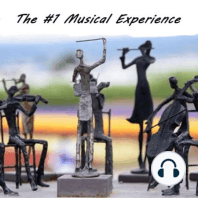16 min listen

Dvorak's Symphony no. 9 in Em, 'New World' - I. Adagio, Allegro molto
Dvorak's Symphony no. 9 in Em, 'New World' - I. Adagio, Allegro molto
ratings:
Length:
12 minutes
Released:
Oct 13, 2021
Format:
Podcast episode
Description
Antonín Dvořák wrote his Symphony no. 9 in E minor, Op. 95 From the New World in 1893, while he acted as director of the National Conservatory of Music of America. The piece is popularly known as the New World Symphony, and it is usually referred to as Dvořák's ninth symphony, though in older literature it can be found listed as his fifth symphony (it is very rarely referred to by its Burghauser catalogue number, B. 178). This is by far his most popular work, and one of the most popular romantic pieces ever. Dvořák claimed he was inspired by the peculiarities of the Native American music, and drew attention to its similarities with the African and Scottish music. The sound of the symphony is predominantly pentatonic, so musicologists tend to agree that Dvorak was referring to this characteristic. The theme of the second movement was adapted into a spiritual called Goin' home by Dvořák's pupil William Arms Fisher, who wrote the lyrics in 1922. The popularity of this version has caused the erroneous impression that Goin' Home was the original version. However, it is possible that Dvořák drew inspiration from existing spiritual melodies. The symphony also draws heavily from European tradition: the opening of the third movement bears a strong resemblance to the opening of the third movement of Beethoven's 9th Symphony. Get bonus content on Patreon Hosted on Acast. See acast.com/privacy for more information.
Released:
Oct 13, 2021
Format:
Podcast episode
Titles in the series (100)
Beethoven Symphony no. 5 in Cm, Op. 67 - III. Allegro attacca: Why We Should Expose Our Kids To Classical Music https://ourtownlive.net #herbw79The Symphony No. 5 in C minor of Ludwig van Beethoven, Op. 67, was written between 1804 and 1808. It is one of the best-known compositions in classical music and one... by The #1 Musical Experience